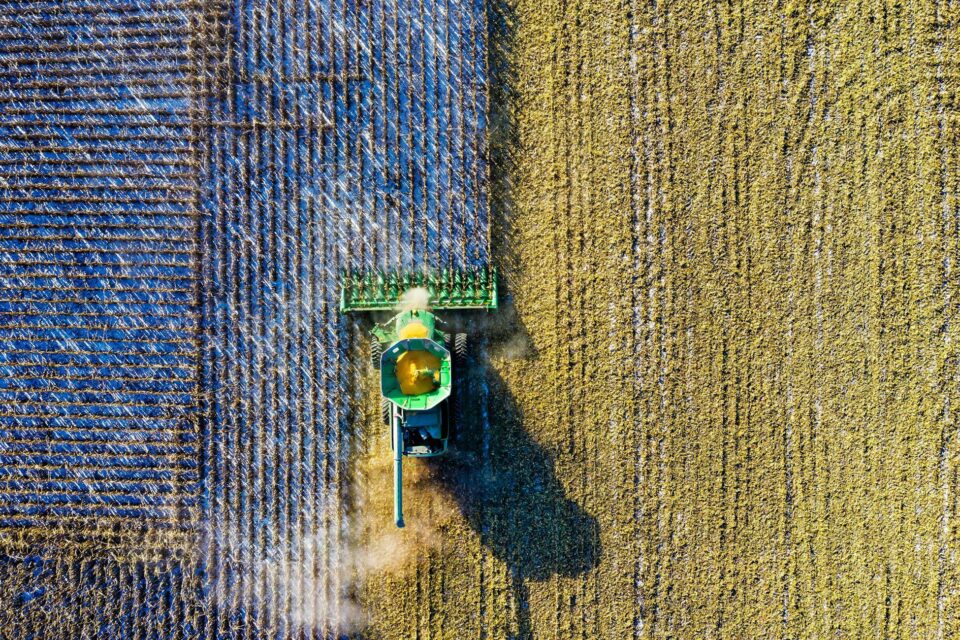Don’t Wait ‘Til the Cows Come Home: State Actions on Climate-Neutral Agriculture
Peter H. Lehner / Nathan A. Rosenberg / February 24, 2022

In every state, the realities of climate change are becoming ever more visible—more frequent floods, droughts, wildfires, heat waves, and more. Agricultural producers are facing some of the most immediate impacts of these weather events. Increased pests and more challenging working conditions further affect their ability to grow plants and raise animals.
Fortunately, many of the agricultural practices that build resilience also help mitigate climate change. However, these climate-friendly practices are employed on only a tiny fraction of US agricultural land. Policy change will be critical to accelerating their adoption. Our new book, Farming for Our Future: The Science, Law, and Policy of Climate-Neutral Agriculture, aims to provide the foundation that federal and state policymakers need for making sound decisions as they face these threats.
One important finding of the book is that state and federal policy makers can—and should—be ambitious on agriculture as they establish climate plans. The data are clear that it is possible to eliminate net agricultural emissions by both significantly reducing greenhouse gas (GHG) emissions and increasing carbon sequestration in plants and soils. Farmers and ranchers can reduce net greenhouse gas emissions through improved grazing and animal feeding practices and better manure, irrigation, crop, and soil management. As we explain in our book, the adaptation and mitigation benefits of cover crops, rotational grazing, and buffer strips, for example, have been widely demonstrated. Growing more perennial crops is an especially powerful tool to build resilience and sequester carbon. Other practices, such as feed additives that can reduce enteric methane emissions and low-cost drip irrigation, show promise and deserve more research and development.
State policymakers should also understand the source of agriculture’s contribution to climate change. Most discussion of climate change focuses on the carbon dioxide emitted by the burning of fossil fuels. Agriculture’s contributions, by contrast, come largely from methane, a powerful greenhouse gas about 85 times more potent than carbon dioxide in global warming (over 20 years), generated by decomposition of manure and in the guts of cows and sheep whose ruminant digestion systems release large amounts of methane. Agriculture’s other main greenhouse gas is nitrous oxide, largely the result of excess nitrogen fertilizer that is converted by soil microbes into this greenhouse gas, almost 300 times more potent than carbon dioxide.
A better understanding of the significance of agriculture GHG emissions also makes clear that states and the country as a whole cannot reach their climate goals without addressing the agriculture sector. The Environmental Protection Agency’s (EPA) greenhouse gas inventory estimates that agriculture is responsible for about 10% of the country’s total GHG emissions, although that number rises to 30% in several states (Idaho, Iowa, Nebraska, South Dakota) and over 20% in many others. This percentage figure, however, is misleading; the true impact of agriculture is far greater. EPA’s inventory places many agricultural activities, such as on-farm energy usage, annual land use conversion, and the production of agricultural inputs, in other inventory sectors; this disaggregation effectively hides the full climate impact of agriculture. Nor does it include the continuing lost carbon sequestration potential of prior land conversion. And finally, recent research indicates that EPA’s models are often overly conservative when compared to actual measurements and undervalue methane’s near-term impact. Accounting for all these adjustments brings the total GHG emissions attributable to the agricultural sector to about one-third of all U.S. emissions.
States have numerous policy levers to support climate-friendly agricultural practices. For example, between 2017 and 2021, California’s Healthy Soils Program provided over $42 million in funding for 640 climate-friendly agricultural projects covering 56,000 acres. The program’s 2021 funding cycle was increased to $75 million. Many states also have existing programs that subsidize various practices and support research that can be better tailored to focus on climate resilience and mitigation. State environmental regulations, which largely serve as regulatory carve-outs for agriculture at present, can be reformed. In addition, governments at all levels can use their enormous procurement power to support the production of food with low-to-no net emissions. Since a relatively small number of large-scale operations produce an immense share of the sector’s emissions, reforming the operations of these facilities would have a huge climate change impact. At the same time, states must be wary of politically attractive biofuel and bioenergy programs that are in fact climatically counter-productive.
Public support for organic agriculture came almost entirely from states and state-level institutions during the sector’s early years. Only after organic farming had become more politically significant did federal farm policy begin to provide real support for organic agriculture through its research, conservation, and subsidy programs. States have a similar opportunity to kickstart climate-neutral agriculture. We have little time to lose.
This page was updated on January 19, 2024 to better meet our accessibility standards. To see the page as it was initially published, click here.
